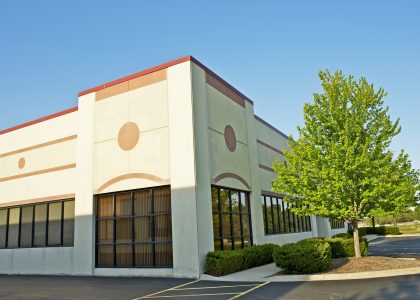Since the inauguration of President Donald Trump just over one year ago, there has been a major buzzword: “reform”. A variety of different things affecting the economy have been or will be reformed. One of the most significant ones is his tax reform, the Tax Cuts and Jobs Act.
The law cuts corporate tax rates permanently and individual tax rates temporarily. It permanently removes the individual mandate, a key provision of the Affordable Care Act, which is likely to raise insurance premiums and significantly reduce the number of people with coverage. The highest earners are expected to benefit most from the law, while the lowest earners may actually pay more in taxes once most individual tax provisions expire after 2025.
Interestingly, the majority of Republicans representing California voted the bill down. However, it is believed that, coupled with the healthy GDP (gross domestic product) the country is experiencing, as well as the fact that the region has seen some significant job growth, the state will remain bullish for many years. This is particularly true in the Los Angeles and Orange County areas, and even more so within the commercial real estate market. This was revealed in the latest Allen Matkins/UCLA Anderson Forecast Commercial Real Estate Survey.
The Winter/Spring 2018 Allen Matkins/UCLA Anderson Forecast California Commercial Real Estate Survey reflects the favorable changes to the CRE market caused by the recent federal tax overhaul. The tax bill is expected to increase the rate of return on commercial real estate and makes investment more attractive. Survey participants predict it will cause moderate though uneven growth.
The survey is conducted twice per year and was recently released. It is offered to a panel of anonymous executives in the commercial real estate market. Their aim is to determine what they believe will happen to industrial, multifamily, office, and retail industries. The latest one reveals that the panel has taken an optimistic view for three of those, but that they have a pessimistic view for the retail industry. This was explained by the Operating Partner at Allen Matkins, John Tipton.
He believes that one of the key reasons why the retail market is not looking as good, is because of the rise of ecommerce. Strip malls and other retail outlets across Orange County, and the country as a whole, are changing and focusing more on experiential themes, entertainment, and restaurants nowadays. Over the years, a lot of retail properties were constructed but it is now far easier to purchase things online instead. Tipton feels this is a fundamental shift. It suggests that, while retail will always continue to exist, it is no longer a bullish market because the supply and demand equation has shifted.
The report did show a great deal of optimism in relation to industrial, multifamily, and office markets, particularly in Orange County and Los Angeles. In the latter, there has been a significant rise in the number of jobs in tech and gaming, particularly in Silicon Beach. Furthermore, Hollywood is now home to a wealth of video streaming companies and other forms of tech entertainment businesses. These sectors are driving demand for new office buildings and it is likely that this will continue for many more years. There was a slight drop in demand over 2016 in Orange County, but this has now completely rebounded. The panelists believe that this is due to the very diverse economy of the area. They predict that, by 2020, there will have been a noticeable drop in vacancy rates and rise in rental rates.
Meanwhile, the panel also looked at the industrial real estate market and they found that, in Orange County and Los Angeles, there had been an improvement. Indeed, the panelists themselves were planning new industrial projects. Demand is being driven by e-commerce and an increase in Asian imports, in particular, which is benefiting all of Southern California. The view of the panel, therefore, is strongly optimistic and they believe that rental rates will continue to increase over the coming years. One of the reasons for this is because industrial real estate includes such a wide variety of properties.
Types of industrial property include factory-office multiuse property; factory-warehouse multiuse property; heavy manufacturing buildings; industrial parks; light manufacturing buildings; and research and development parks.
The distributing warehouses, which are required to maintain the increase in demand of e-commerce, for instance, show just how much growth the area can expect. And lastly, the panel showed optimism in relation to multifamily properties for the next five years. Trump’s tax reform is, in actual fact, what made the panel so optimistic. California is traditionally an expensive state to live in, being listed as one of the most expensive in the country.
The median home value in the sunny state is $429,000, and homes generally list for a median price of $425,000 ($256 per square foot). As a renter, you’re looking at a median rent of almost $1,900 and housing and rent prices in some California cities – like San Francisco – are among the highest in the nation.
What this high cost of living has caused is that home ownership is not so attractive for people anymore, and this means more people are interested in renting properties. It is for this reason that two thirds of the panel are actively involved themselves in developing new multifamily properties across all of California. However, they are limited to a certain degree by the available land and, as always, by the cost of development.
Constructing new properties is becoming increasingly expensive. This means that the question is whether or not economic and job growth is sustainable or not. Overall, the panelists are still optimistic, but they do also feel that it is a market to watch.
The entire commercial real estate market, clearly, is bullish and it looks like it will continue to be so for a number of years. This makes Orange County in particular a very interesting area for property investors and developers alike. The true impact of the new tax reforms will have to be seen, however, to determine whether the predictions are right.


